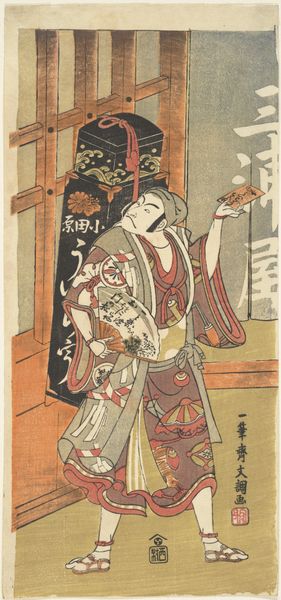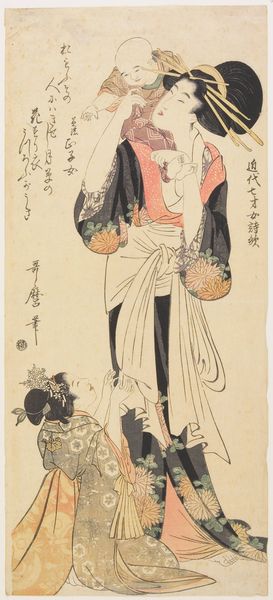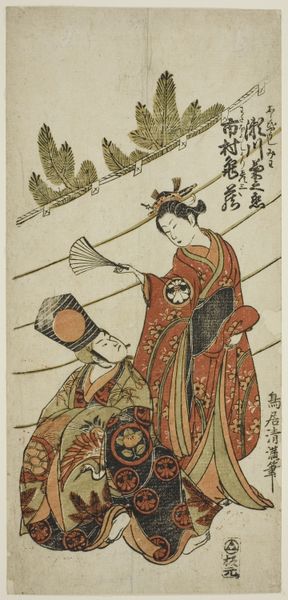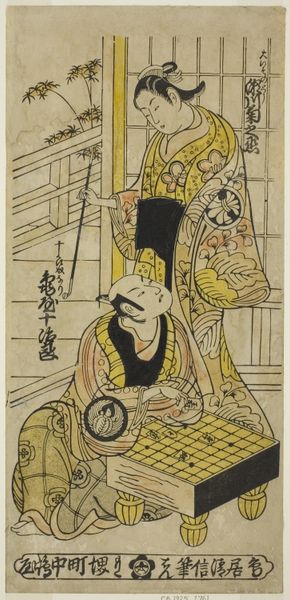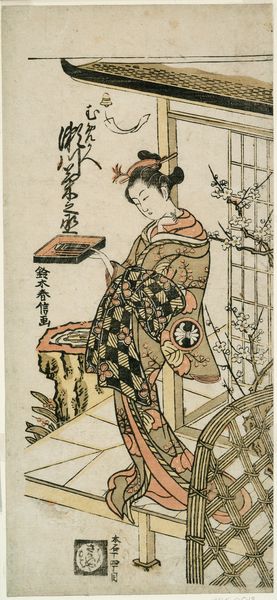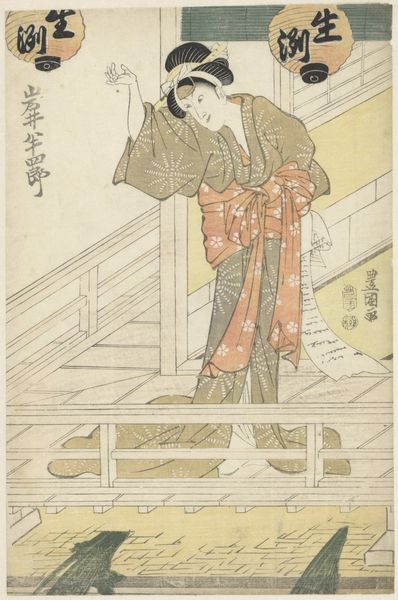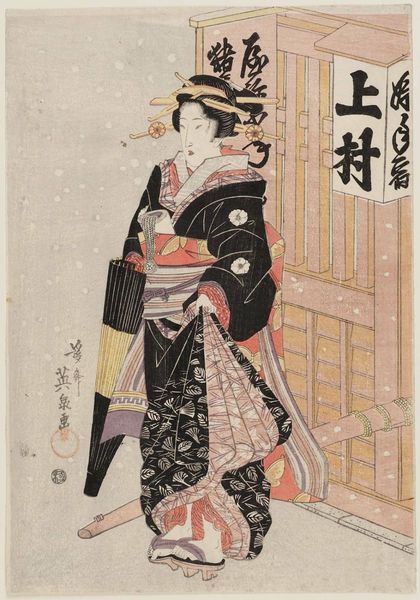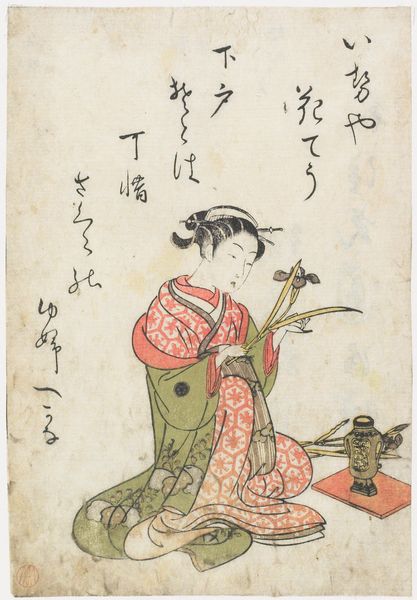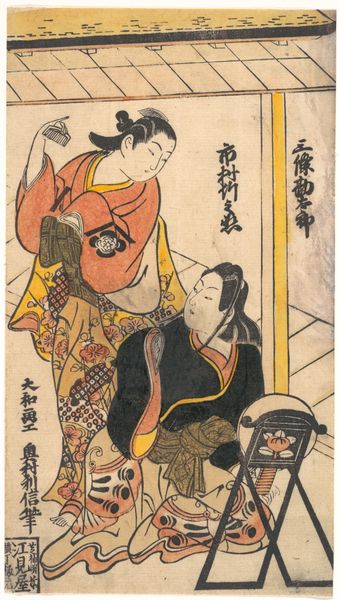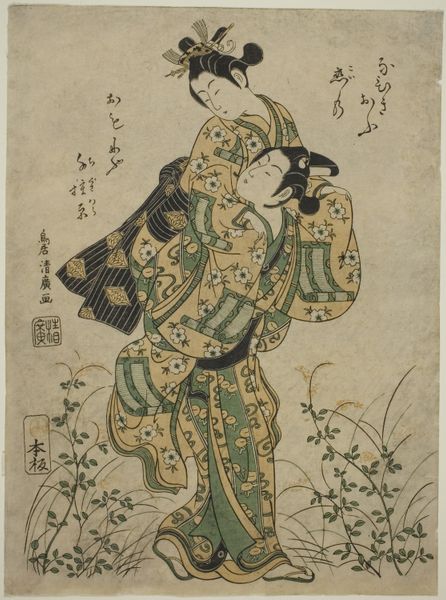
The Actors Matsumoto Koshiro III as Oroku and Bando Hikosaburo II as Fujitaro in the play "Shomei Muken no Kane," performed at the Nakamura Theater in the ninth month, 1767 1767
0:00
0:00
print, woodblock-print
#
portrait
# print
#
asian-art
#
ukiyo-e
#
woodblock-print
Dimensions: 12 × 5 1/2 in.
Copyright: Public Domain
Editor: This woodblock print, created around 1767 by Torii Kiyomitsu, depicts actors in a play. It's currently held at the Art Institute of Chicago. I’m really struck by the tension in the figures’ poses and the use of line to create such expressive faces. What stands out to you? Curator: Indeed, the lines are paramount. Consider how Kiyomitsu uses strong, confident strokes to define the contours of the figures, particularly the robes and hair. Note how the angularity and precision contrast with the relatively plain background. It establishes a hierarchy of visual importance. How does this directionality of line influence your perception of the actors’ relationship? Editor: I see how the sharp lines around the female figure almost seem to trap the male figure below, emphasizing her dominance in the scene. What can you tell me about the symbols and patterns used? Curator: Observe the consistent repetition of circular motifs. Both actors’ kimonos exhibit a floral emblem encased within a circle. This mirroring connects the actors despite their divergent spatial orientations, creating formal cohesion through symbol. Notice the deliberate placement of these patterns—strategically positioned on the chest to capture attention, underscoring that their individual personas, in all likelihood, embody something performative. Editor: So the design elements almost become characters in their own right. Curator: Precisely. These aesthetic elements, line, shape, and pattern contribute to the drama and intrigue. Such elements aren’t merely illustrative; they are constitutive of the artwork’s meaning. I find the geometric stonework behind the performers to add another layer to its narrative: The angular cuts introduce a dynamic yet inorganic element. The effect is striking: how it adds to this dynamic composition, underscoring human versus architectural, or natural versus man-made tension. Editor: That's fascinating. I’ll definitely pay more attention to how these formal elements work together in future pieces. Curator: An informed and rewarding pursuit.
Comments
No comments
Be the first to comment and join the conversation on the ultimate creative platform.
